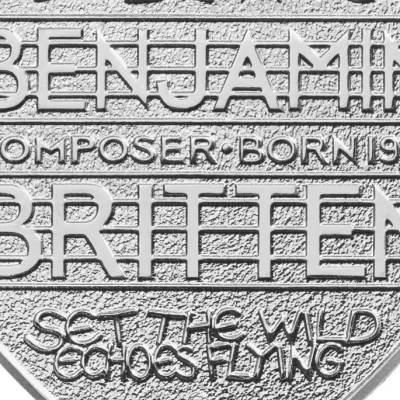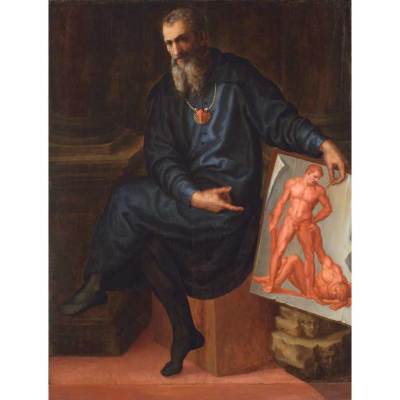Human Mask (2014), a film by Pierre Huyghe, stands as the centrepiece of the French artist’s current show at Hauser & Wirth, his first in the UK since a 2006 exhibition at Tate Modern. It is both strange and beautiful, and consequently not dissimilar to his (notoriously uncategorisable) output to date, in which the cool conceptualism and probing intellectualism of his films, sculptures and installations has been matched by a purposeful visual elegance.
Video still, from ‘IN. BORDER. DEEP’, Hauser & Wirth London, 2014 © Pierre Huyghe. Courtesy the artist, Hauser & Wirth, London and Anna Lena Films, Paris

Set in Fukushima following the 2011 nuclear disaster, Human Mask introduces a desolate, unpeopled landscape. As the camera passes over wrecked buildings and debris strewn across the ground, we are brought inside the one structure still standing. A former restaurant, it is dimly lit and houses what appears to be a girl in a white mask. But from her dress hairy arms and legs protrude: the girl is in fact a monkey. Given that the 19-minute film is artfully shot in high-definition, it’s easy to mistake the creature for an elaborate digital image; but Huyghe rented a real macaque from a restaurant owner in Tokyo, who had taken to dressing it in a mask and using it as a waiter. In the film, the monkey stays within the restaurant, but with no role. Lost and agitated, it pads around hopelessly; trapped in Huyghe’s fiction, its unease is real and palpable.
Video still, from ‘IN. BORDER. DEEP’, Hauser & Wirth London, 2014 © Pierre Huyghe, Courtesy the artist, Hauser & Wirth, London and Anna Lena Films, Paris

If Human Mask propels us headfirst into some disquieting dystopian future, the rest of the show sends us backwards. The second film – which has a sporadic, pulsating soundtrack that shatters the gallery’s eerie stillness – gets close up to insects embalmed in a state of copulation in glistening amber some 30 million years ago. Filmed using hi-tech macro- and microscopic cameras, De-extinction presents a moment suspended and, as its title suggests, brings that which is extinct fleetingly back to life. This is true also of La déraison, a concrete and marble mass installed at the beginning of the exhibition. Headless and semi-nude, the work is a replica of a sculpture originally displayed in the 1930s. It is an abandoned blackened heap, with pools of water and gathering moss, that nevertheless crawls with life: spiders scurry across and it is warm to the touch.
Installation view © Pierre Huyghe. Courtesy the artist and Hauser & Wirth, London. Photo: Hugo Glendinning

La déraison is reminiscent of Untilled (2011–12), Huyghe’s Documenta 13 project, which turned a compost heap into an untamed garden and installed a reclining nude sculpture with a beehive for a head. The site teemed with natural life – flora, fauna, ants, tadpoles, and a wandering dog with one leg painted pink. There are links too with his recent aquarium works and their live marine ecosystems. One of these, Recollection (Zoodram 4 after ‘Sleeping Muse’ by Constantin Brancusi) (2011), features a hermit crab wearing a replica version of a Brancusi head. Three aquaria, glowing in the gallery gloom, are on show here, continuing this exploration of the life of artworks and the different forms that creation can take. Each tank contains biotopes taken from Monet’s carefully cultivated garden at Giverny. Installed on plinths, they are lit by overhead lamps and covered with switchable glass that, as its opacity changes, reveals or conceals the lilies and pond-life inhabiting them. The lights themselves are programmed to replicate the natural light levels recorded between 1914–18 when Monet produced his famous suite of Nymphéas paintings, with each aquarium spanning a specific time period.
Installation view © Pierre Huyghe. Courtesy the artist and Hauser & Wirth, London. Photo: Hugo Glendinning

These so-called ‘transplants’ create a new form of life for Monet’s work, and suggest how the present carries traces of the past. For another work, The Clearing, the artist has scraped away the surface of one of the gallery walls to reveal the red remnants of a previous display – harking back to his recent Pompidou retrospective, when he deliberately left signs of the Mike Kelley show that had preceded his. Huyghe’s works are often interconnected, referring to each other across different media and techniques: in a sense, the life cycle of his entire oeuvre is on display here. But they are also entangled in a history of art that seems cyclical rather than linear.
Full of temporal slippages, the show recalls the opening lines of T.S. Eliot’s Four Quartets: ‘Time present and time past / Are both perhaps present in time future’. Like many of Huyghe’s works, the ones on show here disrupt the lines separating past and present, natural and artificial, animal and human. More than a moment, this is a lifetime – indeed, a whole world – suspended. Wandering around uneasily like Huyghe’s masked monkey, we are forced to look at our place in the world – to confront where we have come from and where we might be going.
‘Pierre Huyghe: In. Border. Deep’ runs at Hauser & Wirth, London until 1 November.
Related Articles
Park to Pompidou (Caroline Rossiter)



